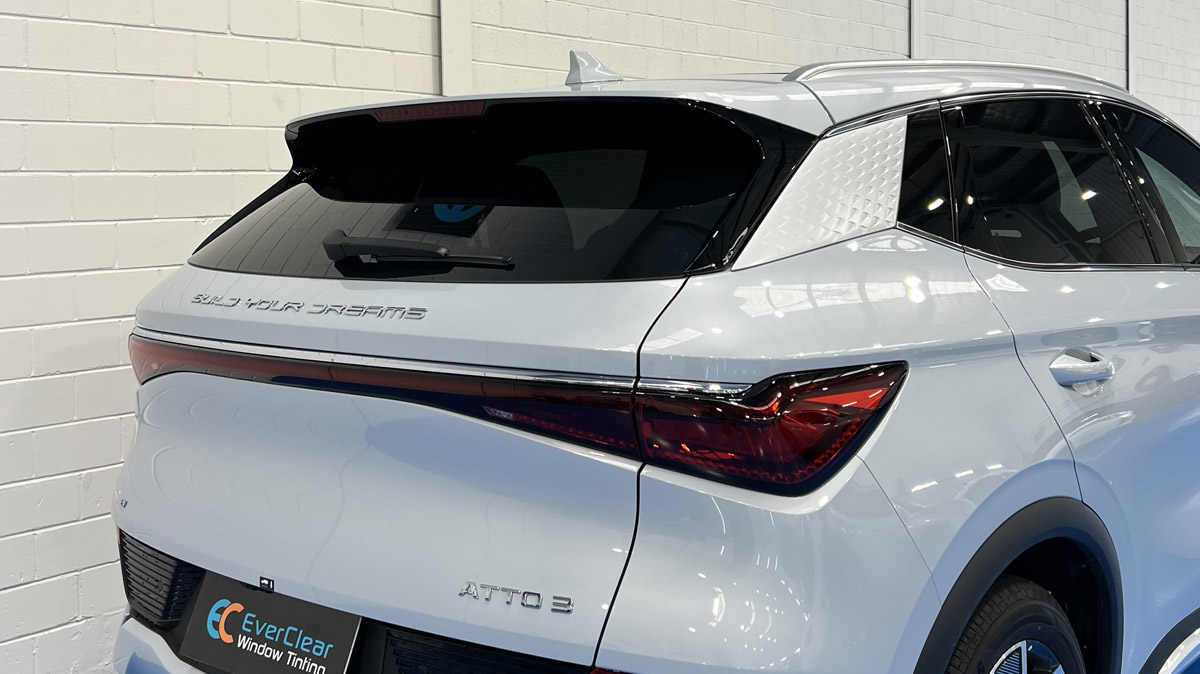
No, if you live in NSW and your vehicle is primarily used for the carriage of goods, it is legal to have window tinting with a luminous transmittance of 0% on your rear window.
Navigating the complexities of vehicle visibility laws in Australia, particularly concerning rear window visibility, is crucial for every driver. This article delves into the legality, safety implications, and nuances of having an obstructed view out of your car’s back window, with a focus on Australian regulations and specific state laws.
Legality of Obstructed Rear Windows
Contrary to popular belief, Australian law does not explicitly require an unobstructed rear window, meaning you can tint your back window darker. However, regulations vary for different vehicle types. For instance, SUVs, vans, and utes often have unique visibility setups. SUVs like the Toyota RAV4, Land Rover Defender, and Nissan Pathfinder utilise camera systems to enhance rear visibility. Similarly, vans and trucks are commonly seen with blanked-out panels or toolbox-style canopies due to security or functionality needs.
Australian Vehicle Standards Regulation 35 mandates rear vision mirrors to ensure drivers can see the road behind them. Specifically the rule states “A rear vision mirror or mirrors must be fitted to a motor vehicle as required by this rule so that a driver of the vehicle can clearly see by reflection the road behind the vehicle and any following or overtaking vehicle.” This rule highlights the importance of rear visibility, albeit indirectly.
Vehicles built before July 1975 must have at least one interior rear vision mirror, while those built after must have exterior mirrors on both sides if their gross vehicle mass (GVM) exceeds 3.5 tonnes. The rule specifically states “At least 1 rear vision mirror must be fitted to each side of a motor vehicle with a GVM over 3.5 tonnes; and a motor bike, or motor trike with 1 front wheel, built after June 1975.”
Tinting Laws and VLT (Visible Light Transmission)
Window tinting is a notable aspect of rear window visibility. In Australia, tint darkness is measured in VLT, indicating the percentage of light passing through car windows. Legal limits for rear window tinting vary by state, generally capping at 20% VLT, except in the Northern Territory, which allows 15% due to its hot climate.
National Code of Practice and NSW Regulations
The National Code of Practice for Light Vehicle Construction and Modification (NCOP) doesn’t directly address driver’s vision but notes that certain modifications, such as non-reflective bodywork markings, don’t require certification.
The NSW Road Transport (Vehicle Registration) Regulation 2017 goes further, allowing a luminous transmittance of 0% for rear windows if the vehicle has side mirrors and is primarily for goods carriage. Section 6B states:
“If all of the following apply to a motor vehicle, the motor vehicle’s rear glazing may be coated to achieve a luminous transmittance of 0% or more—
(a) the vehicle is fitted with at least 1 rear vision mirror to each side of the vehicle,
(b) the vehicle is designed primarily for the carriage of goods,
(c) the vehicle has—
(i) at least 4 wheels, or
(ii) at least 3 wheels and a GVM of more than 1 tonne.”
Penalties for Obstructed Rear Windows
While not outright illegal, obstructed rear windows can contribute to unsafe driving practices. Penalties, including fines or demerit points, may ensue, particularly if the obstruction leads to an accident. License suspension can occur in severe or repeated cases.
Safety Risks and Visual Display Units (VDUs)
Limited rear visibility presents significant safety risks, such as challenges in reversing and changing lanes. This risk is amplified in vehicles like vans or trucks, where natural design limits visibility. Modern solutions like rear-view cameras are legally acceptable as VDUs, provided they don’t distract the driver from the road.
Recommendations and Conclusion
Given the legal and safety considerations, it’s advisable to maintain as clear a rear view as possible. Utilising technology like additional mirrors or camera systems can significantly enhance rear visibility, especially in vehicles with natural limitations. While Australian law may not mandate clear rear window visibility, prioritising it is vital to safe driving. Each state’s regulations should be considered to ensure compliance and safety on the road.

